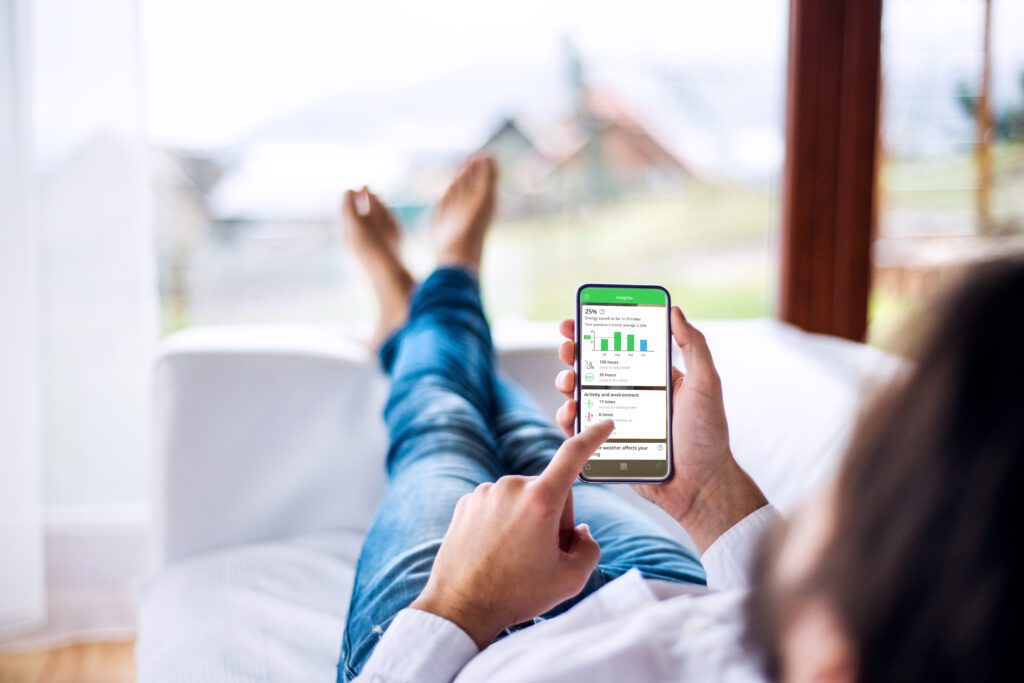Recently, climate change and sustainability research reports alongside net zero targets have been making the headlines. But the truth is, the future of the planet rests in the hands of us as energy users -from multinational enterprises to individual households. What happens at the energy source of our homes or office buildings is every bit as important for sustainability as a new renewable energy infrastructure project coming online.
Electricity, gas, and any other energy-generated carbon emissions are all invisible and whilst our planet faces the biggest challenge in human history, it’s incredibly difficult to fight an enemy and positively impact elements you can’t see. While we know that up to 80% of all CO2emissions are linked to our use of energy, until we can see the environmental cost of our energy use and make it easy to visualize, we won’t be able to change our behavior fast enough to turn the tide on climate change and be sustainable in the long run.

Global warnings
There is no shortage of bold statements that we are not yet on track to meet our environmental goals. The most recent sustainability report from the UN’s Inter governmental Panel on Climate Change(IPCC)has confirmed what we’ve suspected for some time: we are not cutting carbon emissions at a fast enough rate. The crisis is happening now, despite the fact that climate change should be natural and happen at geological speed; the number of days per year when the temperature reaches 50°C has doubled since the 1980s.The most recent IPCC report has found that extreme weather events are becoming “more intense and more frequent”, and that the planet will have warmed by 1.5°C by mid-century.
Our own calculations within the2030 Imperatives White Paper suggest that we must halve our emissions by 2030 and move at a much faster pace to stay on track. With these global sustainability warnings coming in rapidly from governments and world leaders, it can be easy for consumers and businesses to feel lost, discouraged, or not know how to make a difference. We may start wondering how any of us can make a measurable, positive impact on the climate.
Strength in numbers
The sustainability challenge we face today is where we must start to find the solution. Our large and growing population means that effective energy efficiency initiatives can have a rapid positive effect.
Households today make up roughly a third of all CO2 emissions. That means there is huge scope for making drastic change within households worldwide, as long as we can track and reduce the energy we are unknowingly wasting, and reducing the carbon that we can’t see, but know we’re responsible for. Technology can help us, but we must also change our mindsets towards sustainable behaviors. For instance, our most recent multi-market consumer research shows that while consumers are really concerned about the prospect of rising energy bills, twice as many consumers will invest in a smart home speaker than consider buying a smart thermostat that will help tackle their rising energy bills and other sustainability issues
To successfully fight climate change and reduce fossil-fuel derived energy usage, we need strength in numbers. But we can’t expect individuals to take on the sustainability task alone: they need support – from the business community, local authorities and governments to help them make their homes fit for the net zero age.
Making sustainability a way of life
Interestingly, consumers have faith in businesses’ ability to help them become more sustainable, and help them consume greener products and services from the get-go. But perhaps the biggest contribution the private sector can make is to make energy usage, losses and emissions visible to ordinary people.
Businesses have an important responsibility to help consumers understand how much CO2 emissions they are responsible for, identify the best way to tackle them, and help everyone take the steps towards net zero, sustainable homes across the world.
Technologies such as Schneider Electric’s Wiser that help visualize usage and emissions are key to instilling a sense of empowerment among consumers, giving the impetus to take immediate actions today. There is so much more that we can do in this area: from home energy management systems to energy advisors; demystifying solar and EV charging and making it easy to monitor and control energy use through a mobile app – and we’ve barely got started in uncovering the technology within the relm the sustainable living revolution.
It is now that we must make sustainable living a permanent fixture of our lives. No amount of promises, targets or technologies will have the required impact on the climate on their own: only a fundamental change in everyone’s behavior will.
The most important role technology can play is motivating us to make the required changes, to help us stop thinking of sustainability as requiring a sacrifice to our lifestyles, but as something we actively want to achieve and will make countless benefits to our daily lives. For emissions and energy, visibility is key. But sustainability doesn’t end with the climate. There are challenges still remaining when it comes to recycling, waste management, plastics and more to truly build a circular economy.
We are working on a suite of solutions to drive sustainable action beyond the energy management frontier, with more updates coming soon. In the meantime, we must remember that the biggest and most meaningful change comes when people are empowered to take ownership of their own contributions to the sustainability challenge that affects us.




